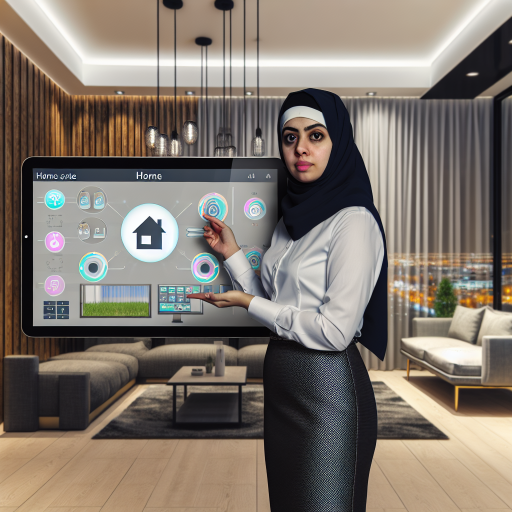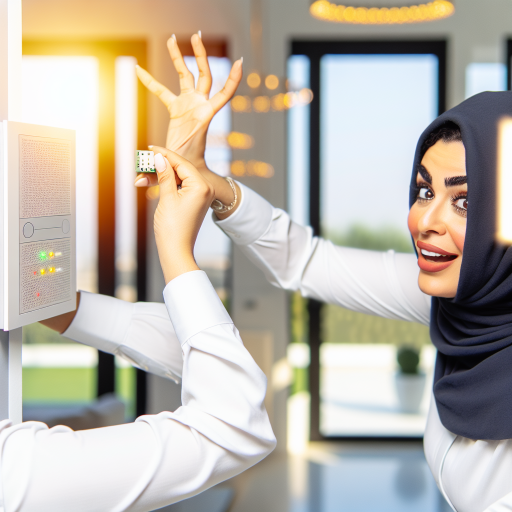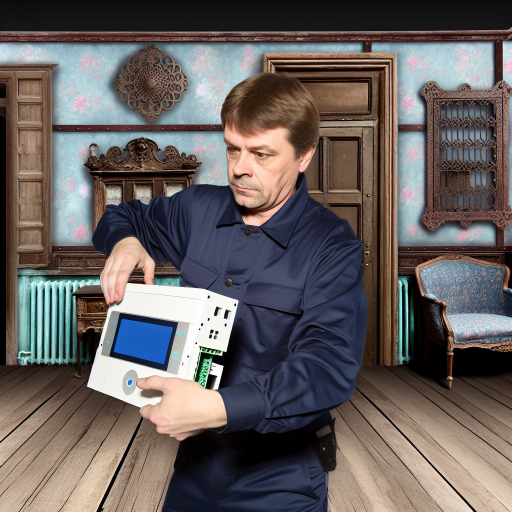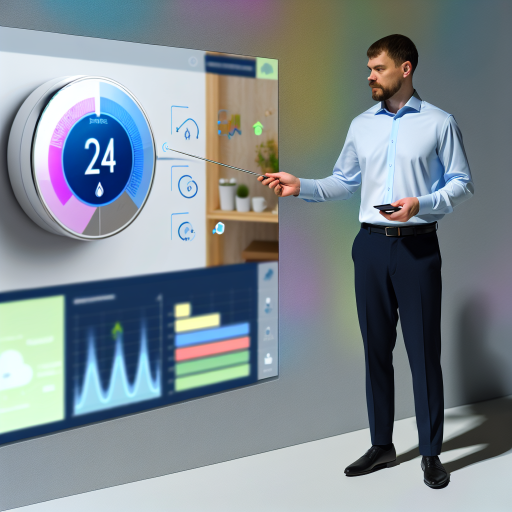Introduction to Smart Home Technology
Overview of Smart Home Technology
Smart home technology integrates devices for improved convenience and security.
This technology allows remote control of appliances through smartphones or voice-activated systems.
Consumers can now customize their household environments with ease.
Many smart home devices connect via Wi-Fi or Bluetooth for seamless interaction.
Benefits of Smart Home Technology
One significant benefit is enhanced energy efficiency.
Smart devices can reduce energy usage by optimizing heating and cooling systems.
For instance, smart thermostats learn schedules to minimize unnecessary energy consumption.
Security is another major advantage offered by smart home technology.
Smart cameras and alarms provide real-time surveillance and alerts.
This boosts peace of mind, especially for those who travel frequently.
Additionally, smart automation simplifies daily routines.
For example, smart lights can adjust automatically based on time of day.
Voice-activated assistants make controlling devices effortless for users.
Getting Started with Smart Home Devices
Begin with the fundamentals by choosing a central hub.
This hub connects all your smart devices for easier management.
Select devices that align with your lifestyle and needs.
Common options include smart bulbs, thermostats, and security cameras.
Installing these devices is usually straightforward and user-friendly.
Consult product manuals for specific setup instructions.
Explore compatible apps to streamline your smart home control.
Gradually expand your system to include more devices as you become comfortable.
Key Components of Smart Home Systems
Devices
Smart home devices enhance convenience and security in daily life.
They range from smart speakers to security cameras.
Smart speakers, like Amazon Echo, offer voice-controlled assistance.
This allows you to control various devices effortlessly.
Smart thermostats, such as Nest, optimize home heating and cooling.
They learn user preferences to save energy and costs.
Smart security cameras provide real-time monitoring and alerts.
They ensure safety by allowing remote access to live feeds.
Additionally, smart lights, like Philips Hue, enable personalized ambiance.
You can control them remotely or set automated schedules.
All of these devices connect to a central hub for streamlined control.
Platforms
Smart home platforms integrate various devices into one system.
Popular platforms include Google Home and Apple HomeKit.
These platforms support a diverse range of devices.
For instance, Google Home works with products from multiple brands.
This flexibility allows users to create customized systems.
Moreover, platforms often offer mobile applications for easy management.
Users can control their devices anytime and anywhere.
Compatibility is key when choosing devices and platforms.
Always ensure that devices work seamlessly with your chosen platform.
The right combination enhances functionality and user experience.
Understanding Home Automation Terminology
What is Home Automation?
Home automation refers to the control of various home functions digitally.
People can manage lighting, security, and climate from their devices.
This technology enhances convenience and energy efficiency.
Key Terms to Know
Smart devices connect to the Internet for control and monitoring.
IoT stands for the Internet of Things, which refers to these connected devices.
Home hubs act as central systems controlling multiple smart devices.
API is an Application Programming Interface that enables interaction between software components.
Types of Home Automation Systems
There are several systems available for home automation.
- Security systems provide surveillance and alarm functions.
- Lighting controls adjust brightness and can be scheduled.
- Smart thermostats optimize heating and cooling based on preferences.
- Home entertainment systems include speakers and televisions integrated into smart technology.
Popular Smart Home Brands
Many brands dominate the home automation market today.
- Amazon offers the Alexa voice assistant, which controls various devices.
- Google Nest provides smart thermostats and security devices.
- Philips Hue offers innovative smart lighting options.
- August produces smart locks for enhanced security.
Benefits of Home Automation
Home automation provides numerous benefits for users.
Convenience is one of the primary advantages.
Users can control systems remotely through their smartphones.
Moreover, home automation can enhance energy efficiency significantly.
These systems lead to increased home security and peace of mind.
Explore Further: The Impact Of IoT-Enabled PropTech Devices On Real Estate Management
Popular Smart Home Devices for Beginners
Smart Speakers
Smart speakers are perfect for beginners.
They allow voice commands for various tasks.
Devices like Amazon Echo and Google Nest are popular choices.
Additionally, they can control other smart devices smoothly.
Smart Bulbs
Smart bulbs enhance your home lighting experience.
They offer features like dimming and color changes.
Brands like Philips Hue and LIFX are widely recommended.
Furthermore, they can be controlled via apps or voice assistants.
Smart Thermostats
Smart thermostats help maintain comfortable home temperatures.
They adjust based on your routine and preferences.
Consider options like Nest and Ecobee for easy installation.
These devices can save energy and reduce bills over time.
Smart Security Cameras
Security cameras enhance your home safety significantly.
Beginner-friendly models include Ring and Arlo.
These cameras allow remote viewing from your smartphone.
Moreover, they send alerts when motion is detected.
Smart Plugs
Smart plugs provide an inexpensive entry into home automation.
They allow you to control everyday devices remotely.
Popular options include TP-Link and Wemo plugs.
Additionally, they can schedule operating times for connected devices.
Smart Doorbells
Smart doorbells offer convenience and security.
Devices like Ring Video Doorbell allow you to see guests remotely.
They feature two-way audio for easy communication.
This ensures you never miss a visitor, even when away.
You Might Also Like: Maximizing Home Security With Advanced Integrated Smart Surveillance Solutions
Setting Up Your Smart Home
Understanding Smart Home Basics
Smart home technology makes your life easier and more efficient.
It allows you to control devices remotely using your smartphone.
Begin by identifying your primary needs and goals.
Consider aspects like security, convenience, and energy efficiency.
Choosing the Right Devices
Select devices that fit your lifestyle and budget.
Popular categories include smart lights, thermostats, and cameras.
Research brands like Philips Hue, Nest, and Ring for reliable options.
Be sure the devices are compatible with your home network.
Preparing Your Home Network
A strong Wi-Fi connection is essential for smart home devices.
Start by evaluating your existing network setup.
Consider upgrading your router for better coverage and speed.
Additionally, use a secure password to protect your network.
Installation Steps
Begin installing your chosen devices one at a time.
Follow the manufacturer’s instructions for setup and placement.
For example, smart bulbs typically replace standard bulbs effortlessly.
Next, download the corresponding apps for your devices.
Configuring Your Devices
Open each app to follow the setup prompts.
Connect devices to your Wi-Fi network as instructed.
Many apps also allow you to create user accounts for security.
Once set up, test each device to ensure proper functioning.
Creating Automations and Scenes
Automations enhance the functionality of your smart home.
For instance, set lights to turn on at sunset automatically.
You can use apps to group devices into scenes for easy control.
Examples include a “movie night” scene that dims lights and lowers shades.
Maintaining Your Smart Home
Regular maintenance keeps your devices running smoothly.
Check for software updates through the device apps periodically.
Additionally, review your network settings and connected devices routinely.
Always prioritize security by changing passwords at regular intervals.
Discover More: PropTech Applications That Are Redefining Real Estate Transactions
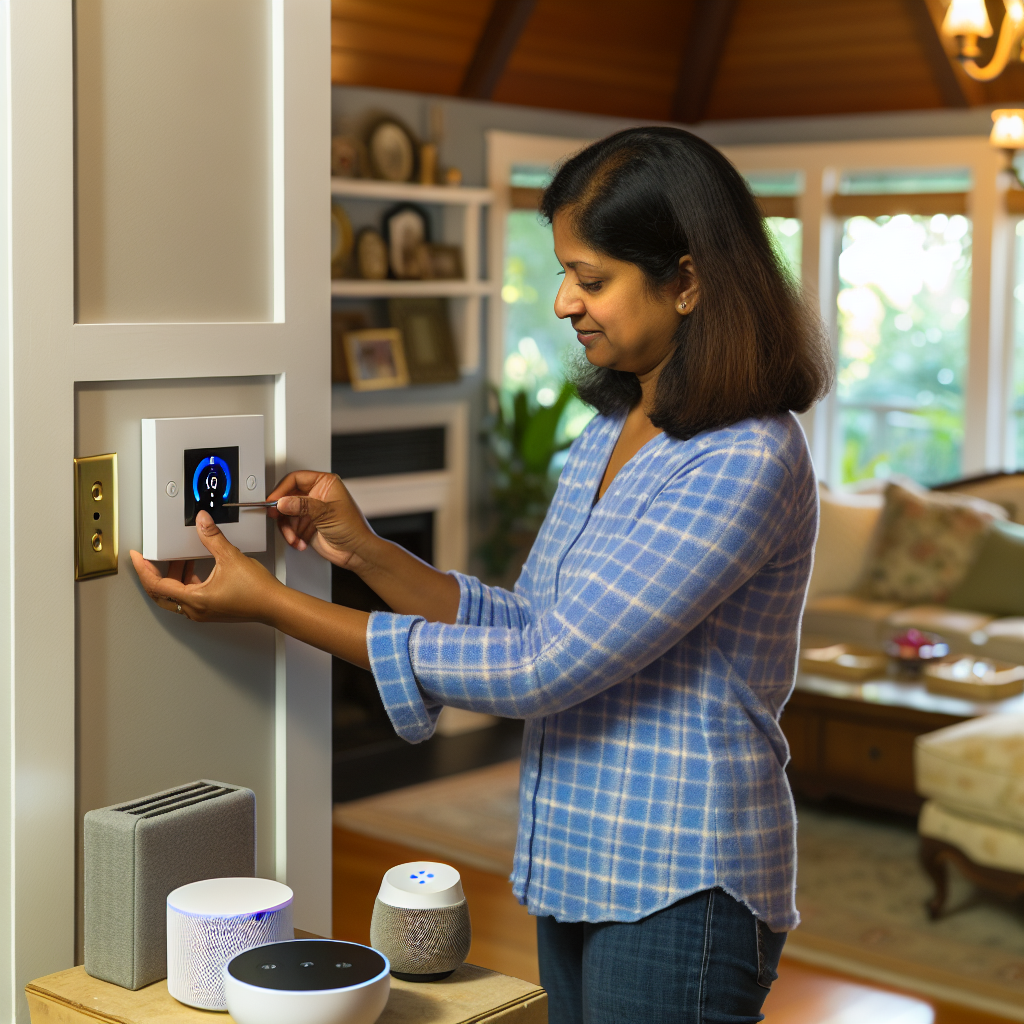
Integrating Smart Home Devices: Best Practices for Compatibility
Understanding Compatibility
Compatibility refers to how well devices work together within a smart home system.
Investing in compatible devices maximizes their functionality.
Researching compatibility can save time and resources later.
Choosing the Right Ecosystem
Pick a smart home ecosystem that suits your needs.
Popular choices include Google Assistant, Amazon Alexa, and Apple HomeKit.
Consider what devices each ecosystem supports.
Evaluate how easy it is to add new devices to the ecosystem.
Prioritizing Standards
Look for devices that support common standards like Z-Wave or Zigbee.
Devices adhering to these standards communicate effectively across different platforms.
This ensures you can mix and match devices from various manufacturers.
Researching Device Compatibility
Read reviews to understand real-world compatibility experiences.
Online forums and user groups offer valuable insights.
Ask friends and family about their experiences with certain brands.
Testing Before Commitment
Purchase one or two devices first to test compatibility.
Gradual introduction helps to identify any issues quickly.
This method allows you to assess ease of integration and functionality.
Considering Future Expansion
Think about your long-term smart home goals when selecting devices.
Choose brands that frequently release new compatible products.
This prepares your home for future technology advancements.
Using a Central Hub
A central hub can streamline communication between devices.
Platforms like Samsung SmartThings allow various devices to connect easily.
Check for compatibility with your chosen devices before investing in a hub.
Updating Firmware Regularly
Firmware updates can enhance compatibility and security.
Always keep devices updated to ensure optimal performance.
Set devices to automatically update when possible.
See Related Content: How Drones Are Enhancing Property Marketing Strategies
Enhancing Home Security with Smart Technology
Understanding Smart Security Devices
Smart security devices play a crucial role in home safety.
They include smart cameras, doorbells, and locks.
These devices provide peace of mind and enhanced protection.
Choosing the Right Smart Security Solutions
Selecting the appropriate devices is essential for enhancing home security.
First, consider your specific security needs.
Next, assess the areas of your home that require monitoring.
Finally, choose products that integrate seamlessly with your existing setup.
Popular Smart Security Devices
- Smart cameras can monitor the exterior and interior of your home.
- Video doorbells allow you to see and interact with visitors remotely.
- Smart locks enable keyless entry and remote access control.
Integrating Smart Devices into Your Home
Integration is key to maximizing the effectiveness of your smart security system.
Start by connecting all devices to a central hub or app.
This allows for easy monitoring and control from your smartphone.
Furthermore, automating alerts and notifications can enhance your security response.
Establishing a Home Security Routine
Developing a regular security routine improves your home’s safety.
Test your devices and update your security software regularly.
Also, review your security camera footage to identify potential issues.
Staying Informed About Security Updates
Keeping up with the latest security updates is essential.
Manufacturers frequently release firmware updates to enhance performance.
Subscribing to security alerts helps you stay informed about potential vulnerabilities.
Consequently, you can ensure your system remains secure against threats.
Future Trends in Smart Home Technology: What to Expect
Increased Interoperability
Smart home devices will increasingly work seamlessly together.
Manufacturers will prioritize interoperability for user convenience.
Consumers will expect a unified experience across various devices.
This trend will encourage new partnerships among tech companies.
Advancements in Artificial Intelligence
AI will play a crucial role in home automation.
Devices will learn user preferences for enhanced automation.
Voice recognition will improve, enabling natural language commands.
Furthermore, AI will allow systems to predict user needs over time.
Enhanced Security Features
Smart home security will evolve to include advanced features.
Facial recognition and biometric authentication will become common.
Homeowners will benefit from real-time alerts and monitoring.
Moreover, automated responses to potential threats will enhance safety.
Energy Efficiency and Sustainability
Smart homes will promote energy-efficient living solutions.
Devices will optimize energy usage to reduce utility bills.
Integration with renewable energy sources will gain traction.
This trend will encourage homeowners to adopt sustainable practices.
Introduction of 5G Technology
The rollout of 5G will impact smart home technology significantly.
Faster connectivity will enable real-time data processing.
This upgrade will improve the performance of smart devices.
Homes will become more responsive and reliable with 5G.
Focus on User-Centric Designs
Future smart home technology will prioritize user-centric designs.
Companies will invest in user research for better usability.
Intuitive interfaces will simplify interactions with devices.
This focus will enhance customer satisfaction and loyalty.
Additional Resources
Boston home automation | TSP Smart Spaces | Smart technology

